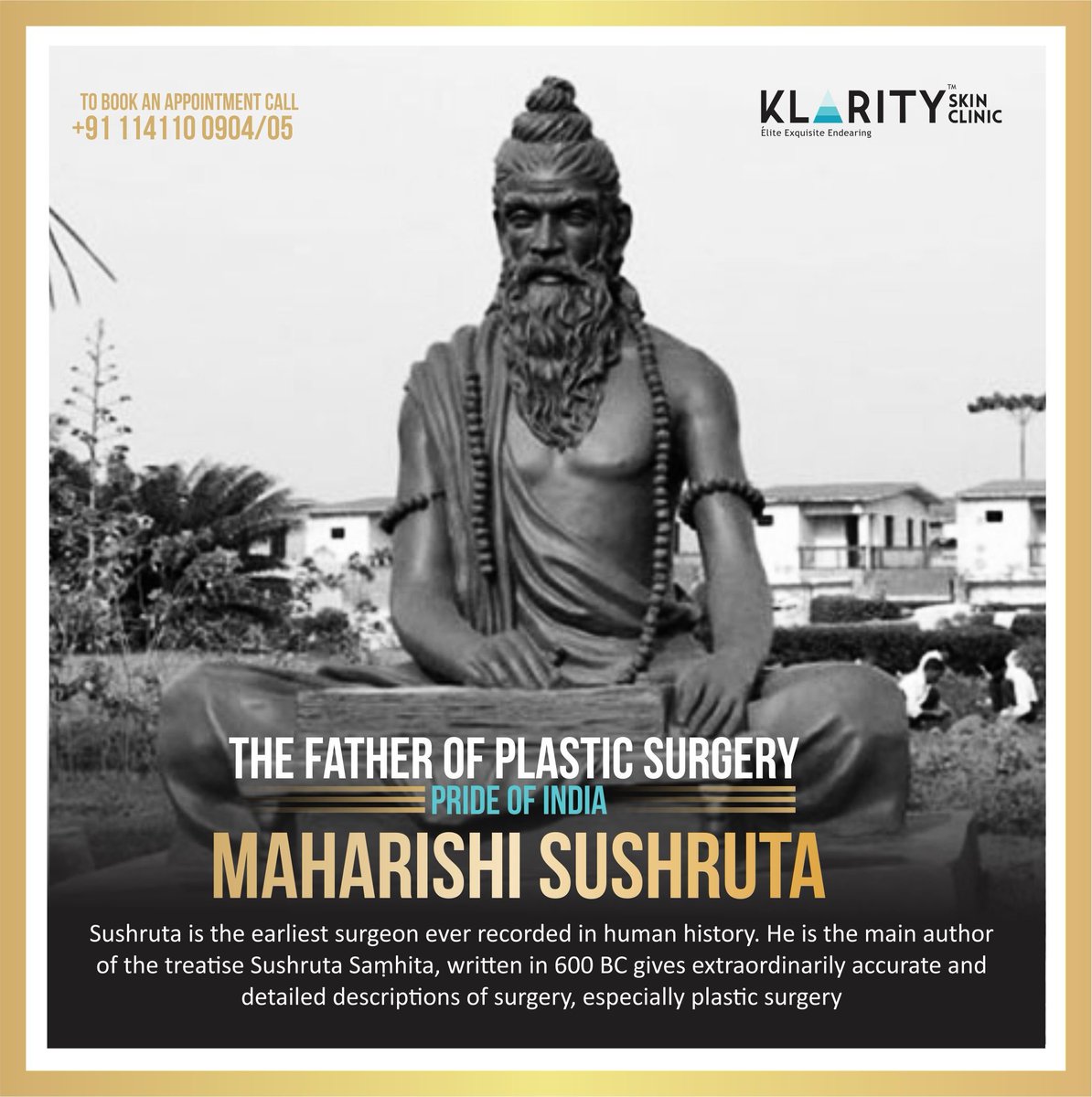

Sushruta also prescribed measures to induce growth of lost hair and removal of unwanted hair.Ĥ. He mentioned the principles of traction, manipulation, apposition, stabilization, and postoperative physiotherapy.ģ. This continues to spellbind orthopedic surgeons even today.Ģ. Besides trauma involving general surgery, Sushruta gave an in-depth account of the treatment of 12 varieties of fracture and six types of dislocation. The Sushruta Samhita is regarded as the earliest document to give a detailed account of rhinoplasty. The practice of Rhinoplasty slowly started as a result of the need to reconstruct the external nose and later developed to full-fledged science. In ancient times, amputation of the nose was frequently done as a punishment for criminals, war prisoners or people indulged in adultery.


The nose in Indian society has remained a symbol of dignity and respect throughout antiquity.
#Maharshi sushruta skin
He used a flap of skin from the forehead, called a pedicle, to form a new nose. Sushruta's treatise provides the first written record of a forehead flap rhinoplasty, a technique still used today to reconstruct a nose. To improve the cosmetic look of the nose.To improve the breathing function of the nose.Rhinoplasty, colloquially known as the 'nose job,' is a surgery performed to achieve two results: Some grafts include blood vessels and muscle, such as in reconstructive breast surgery. Today, surgeons use skin grafts to restore areas that have lost protective layers of tissue due to trauma, infection, burns, as well as to restore areas where surgical intervention has created a loss of skin, as can happen with melanoma removal. Skin grafts entail transplanting pieces of skin from one part of the body to another.


 0 kommentar(er)
0 kommentar(er)
